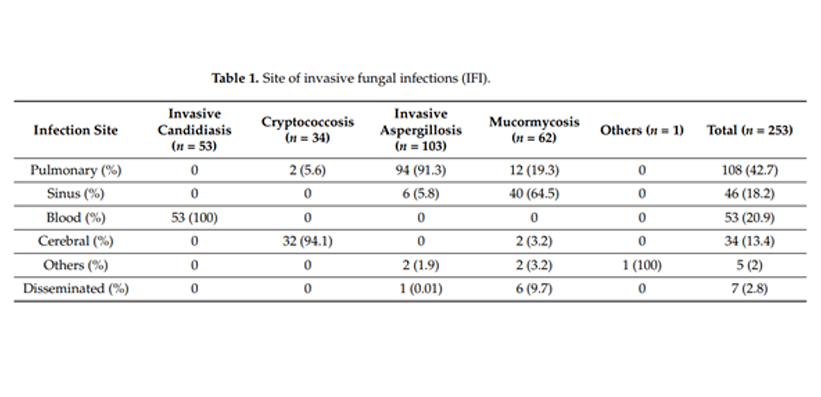Critical Care
About Invasive Fungal Infections in India
Over the past few decades, incidence of IFIs has been increasing. This is attributed primarily to the overall increase in the number of patients irrespective of severe immunosuppression such as acquired immunodeficiency syndrome (AIDS), hematological malignancies, organ transplantation, etc. or apparent immunocompetent status with diabetes mellitus, chronic obstructive pulmonary disease (COPD), etc. The overall IFI incidence rate varies from 3% to 20%.1
The most feasible IFI diagnostic modality—fungal culture and pathological examination—is not conducive, as it does not meet the urgent diagnosis requirement and thereby delays treatment, resulting in a high fatality rate. IFI pathogens like Candida, Aspergillus, Mucor and many more being the cases.1
A key determinant for the outcome of IFIs is early initiation of antifungal therapy. There are established guidelines for the four commonest IFIs—invasive candidiasis (IC), Cryptococcosis, invasive aspergillosis (IA), and mucormycosis—from the Infectious Diseases Society of America (IDSA), the European Society for Clinical Microbiology and Infectious Diseases, and the European Confederation of Medical Mycology (ESCMID/ECMM). However, uncertainty lingers about the interpretation of antifungal susceptibility testing (AST) and the significance of minimal inhibitory concentration (MIC) in predicting outcome. Regardless, IFIs are a major cause of morbidity and mortality. Careful consideration of local fungal epidemiology describing clinical characteristics, prognostic factors, use of diagnostic algorithms and antifungal susceptibility patterns can prove useful for overcoming these shortcomings. However, there are a limited number of studies from India, which renders many aspects of IFI poorly understood. To address this lacuna, Dabas T et al conducted a study aimed at analyzing clinical, microbiological, susceptibility, and outcome data of IFIs to support clinicians when deciding on prophylactic or empirical antifungal therapy.2

References:
- Dabas Y, Xess I, Pandey M, et al. Epidemiology and Antifungal Susceptibility Patterns of Invasive Fungal Infections (IFIs) in India: A Prospective Observational Study. J Fungi (Basel). 2021;8(1):33. Published 2021 Dec 30. doi:10.3390/jof8010033
- Dabas Y, Xess I, Pandey M, Ahmed J, Sachdev J, Iram A, Singh G, Mahapatra M, Seth R, Bakhshi S, Kumar R, Jyotsna VP, Mathur S. Epidemiology and Antifungal Susceptibility Patterns of Invasive Fungal Infections (IFIs) in India: A Prospective Observational Study. J Fungi (Basel). 2021 Dec 30;8(1):33. doi: 10.3390/jof8010033. PMID: 35049974; PMCID: PMC8777790.
